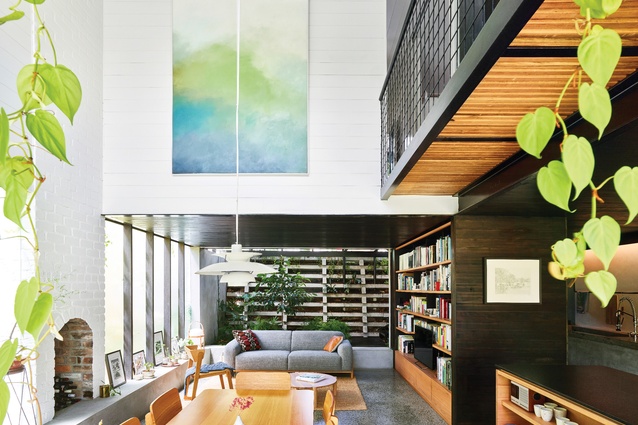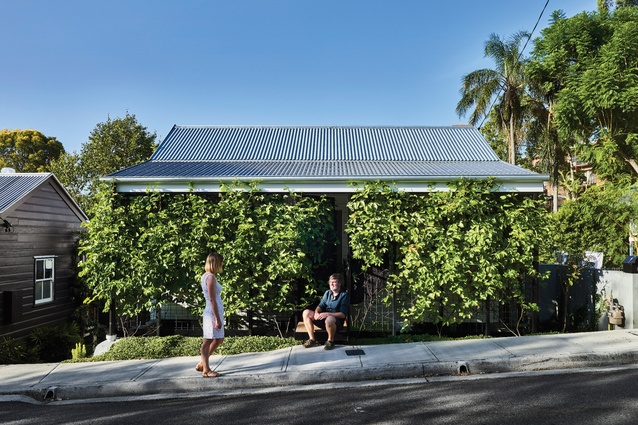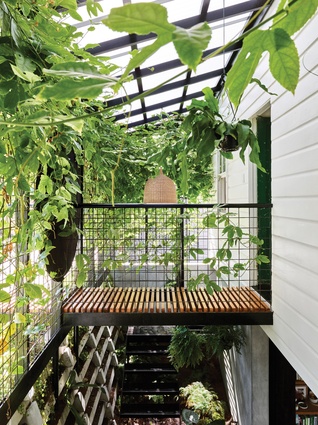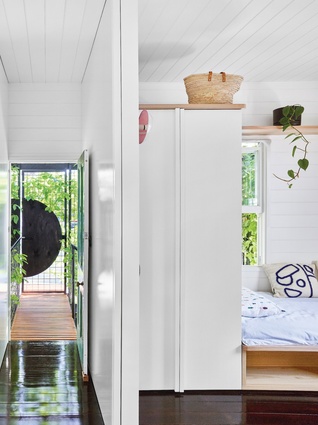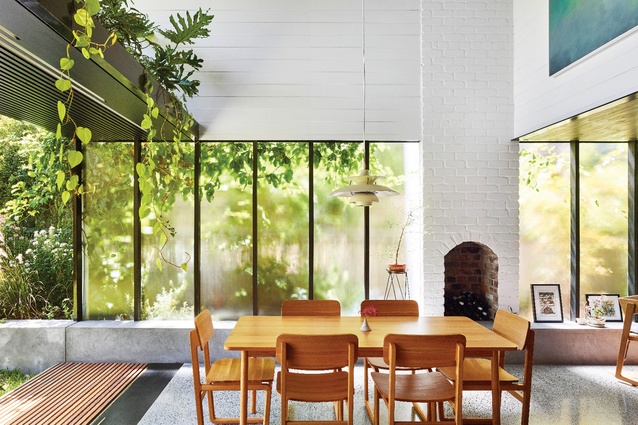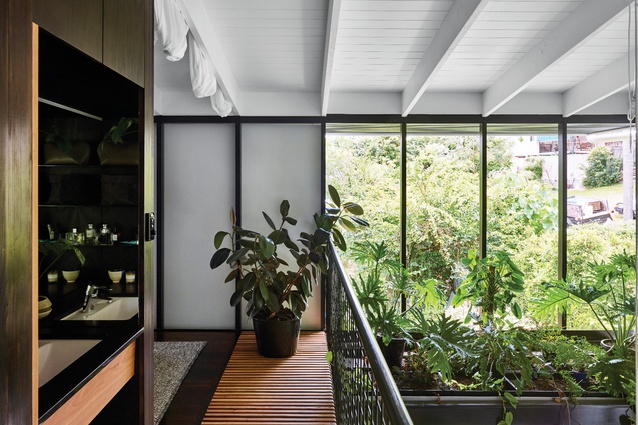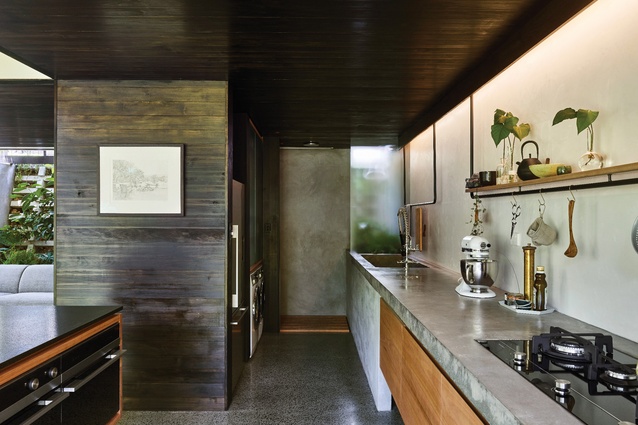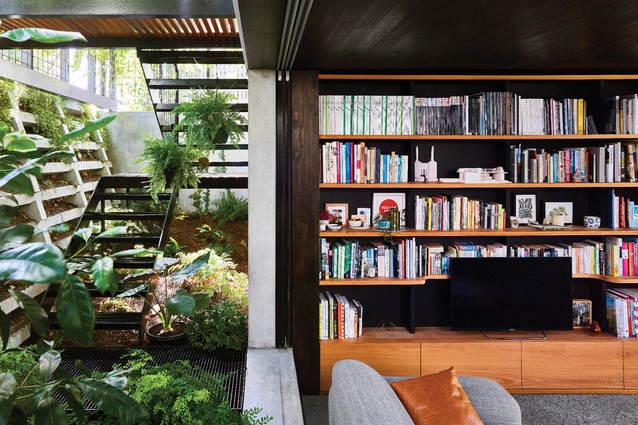Full bloom: Terrarium House
The maverick move of inserting a lush, tree and fern-filled void in the place of a front verandah distinguishes this unorthodox reworking of the Queensland cottage type.
Brisbane’s historic housing stock of timber worker’s cottages has for decades provided rich ground for experimenting local architects. Arguably, architect-owned cottages are the sites of the most radical experiments, facilitating practical research into the flexibility of the type and its constituent parts. The Highgate Hill home of architect John Ellway and his partner Amber Winter is an unorthodox reworking of the cottage type that from the first encounter delights and surprises.
When the couple bought the gabled cottage, sited halfway up a ridge on a tiny block, it was well along the path of destructive neglect. For a couple of years John sat with the challenge of renewing the dwelling, mulling over possibilities, working up the options. Specific qualities of the aged place were observed and became a touchstone for imagining the future version of the dwelling, particularly the cool, shadowy realm beneath the house and the brightened exposure to the north-facing yard created by the falling-away rooms at the back. Pragmatic challenges also piled on: character codes, the overland flow of stormwater, ancient plumbing.
Alterations and additions to worker’s cottages invariably seek to detach the public and private functions more deliberately in reworking the four- to five-room plans. The challenge of unaltered small-cottage living is the single-skin coincidence of private quarters and “public” functions. In the typical cottage plan, you scoot past bedroom doors as you make your way to other spaces, all the rooms close-packed and jostling, because upstairs was for living and downstairs was for stumps.
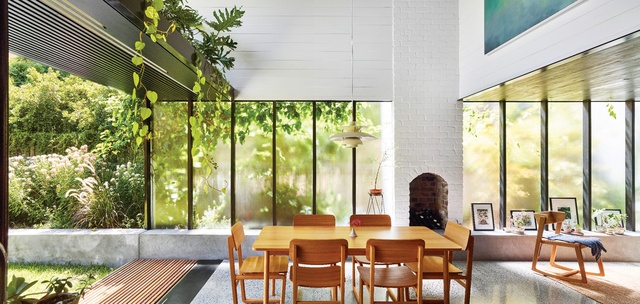
In the 2.5-metre fall from the front boundary to the backyard, John saw the opportunity to economically obtain another level of space beneath the house, maintaining the amenity of street-level access. The challenge was connecting upstairs and downstairs without sacrificing valuable floor space or impeding the distinction between public and private areas.
The maverick move that distinguishes this cottage experiment takes place in the “no man’s land” of the front verandah: it was too valuable to give away to the street, so while John maintained the form of this signifying in-between space, he turned it inward, wrapping it in a light “trellis” layer of black welded mesh that is now heaving with vines.
A secure two-level void is opened to become the signature “terrarium” of the house’s naming. The 2.5-metre boundary cut is gravity-retained by a concrete crib wall cascading with dichondra, and the new depth is planted with native gardenia and ferns.
Within the void, access is deftly managed by a bridge that passes across the space and into the cottage rooms, and a welded steel stair that steps to the level below, where John and Amber can share their space with friends and family. “Once you step through the gate, people can come directly downstairs and upstairs stays private,” says John. “It was all about using every ounce of space possible.”
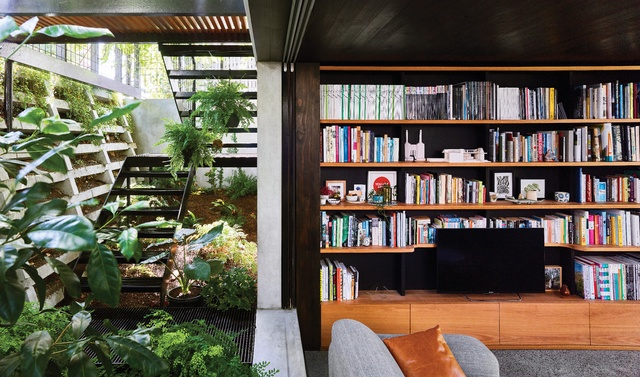
The lower level is shadowy and cool. A kind of stack effect pulls fresh air through the space and out up through the fernery void. The floor is in polished concrete, contained on two sides by a low bund wall that creates a ledge for the display of objects or informal seating. Past the retained south-eastern corner, the eastern edge is enclosed with frosted glass up to the height of the upper floor, washing the space in gentle daylight while allusively smudging the image of a boundary garden onto the interior surface.
While the living area nestles in the compressed space adjacent to the fernery, a double-height volume, ornamented by the restored brick fireplace and flue, rises over the dining table, filling the depths with northern light. The bund wall extends along the eastern edge of the garden, forming a bed for sun-tolerant self-seeding wildflowers.
To the west is an extended utility zone comprised of custom cabinetry and cast concrete elements that neatly facilitate cooking, laundering, storage and the guest bathroom. With various parts doing double and triple duty, this sliver of space hums with ideas. The cast concrete counter runs the full length of the space, terminating at the south in a little garden that connects to the fernery void. The pantry swivels out to reveal the hidden machinery of a solar converter and electrical switchboard.
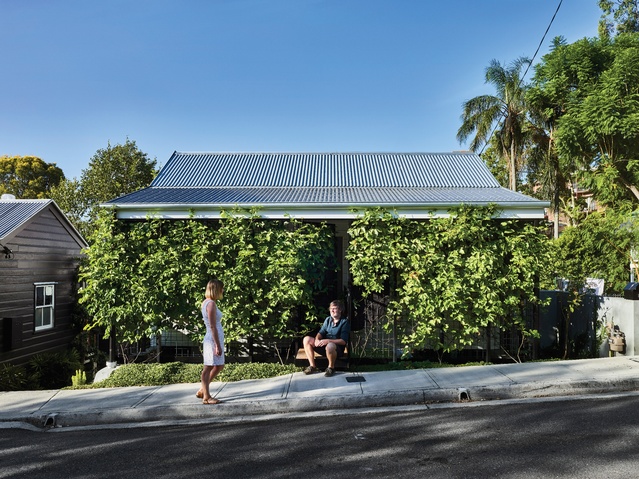
“I’ve spent a lot of time in Japan, and also a bit in Malaysia, and these are influences you might read into the design of the house,” says John. Upstairs it was about “creating a series of bedroom spaces that could adapt over time.” Through the use of floor-to-ceiling sliding panels rather than hinged doors, the two front rooms can be manipulated into different patterns, allowing for one large room or two separate spaces.
A walkway edges the void over the dining area, leading to the bathroom and the couple’s sleeping area. Here the diaphanous quality of glass is again exploited in concert with a large screen that moves across the width of the cottage to open up the void at a high level onto the garden below.
While preserving the envelope and essential form of the cottage, the subtractive and multi-tasking twists in the tale of John’s reinvention create a dwelling that is a genre bender. On a modest budget he’s made so much of the cottage opportunity – by boldly rethinking the verandah zone, challenging notions of enclosure and cleverly intensifying the workload of the expensive bespoke built-in and moving parts. The outcome is an original and disciplined house and an extraordinary exemplar for the expansive possibilities of adaptive, small-space living.
This article was first published on architectureau.com

